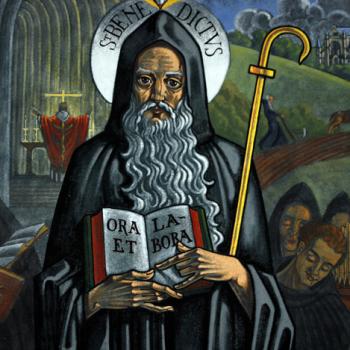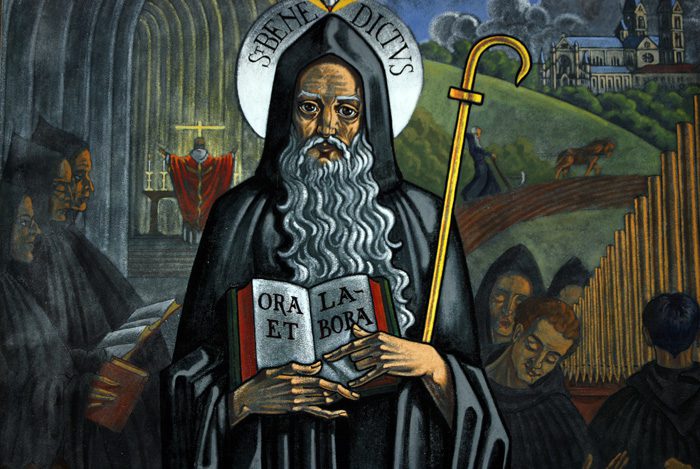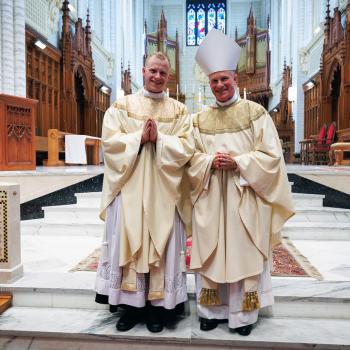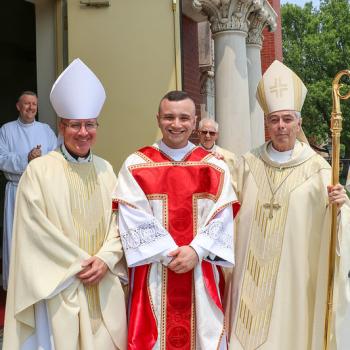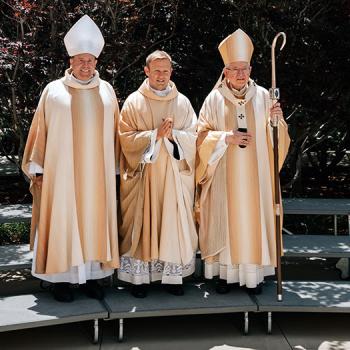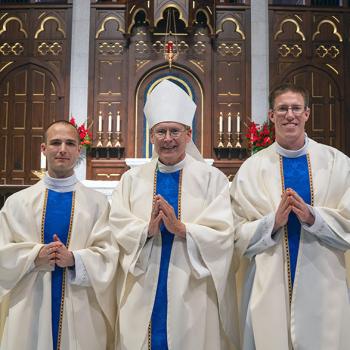Today I ran across a post by Donald Miller of Blue Like Jazz fame and more. I do not follow Donald Miller much or read his work—not out of any protest or high-minded posture, but, well, you have to pick and choose. I don’t have anything much to say about Donald Miller at all, really, nor should I pick on this singular post as representative of the man’s full contribution to Christian spirituality. After all, he’s clearly successful: multiple books, a much sought after speaker, a chosen public pray-er at the 2008 Democratic National Convention, a member of one of Obama’s task forces. He must be very important—he has his own Wiki page (where I obviously found much of this. Does that make it all true?)
Nevertheless, the post, which you can read here, caught my attention, because in it Miller seems to embrace many of the misconceptions we have today about “church” and many of the myths that so painfully gut our Christian spirituality of the deepest practices and purposes that have sustained faith over the last 2000 years.
Two things happen when you spend a lot of time studying the history of Christianity. First, you get depressed. Abuses, violence, confusion, faithlessness, more violence, pride, bad theology, lack of compassion, divisiveness, and on and on. For sure, studying Church history can be disturbing. But then, after a while, amidst the muck, the grace begins to shine through with a gentle, pervasive, even relentless certainty. The darknesses remain, but they are merely long shadows cast by a great light shining on small things.
For example, you read about the religious, political, and cultural chaos of the 14th century in the European arena—ongoing war, failures in spiritual leadership—and you begin to wonder, where are the believers? Where is the demonstration of faith? Where is the good God in all this? And then you read about Julian of Norwich or Walter Hilton or Gerard de Groote or Richard Rolle or a dozen other quiet people of prayer and great love for Jesus. They were there, singular witnesses standing in the light.
And then, the next step in studying Church history, once you’ve shouldered the melancholy and treasured the light, is to ask: what sustained these people in faith? What, in fact, has enable believers over the centuries to believe, to trust, to hope—to stand?
Each of them has his or her own story and unique experiences and practices that nourished faith, but they also all share some common experiences and practices. One such practice is worship, and yes, they all worshipped outside Church walls—in their work and writing and thinking and praying—but they also recognized that the regular gathering to worship in community was a vital part of their faith. Sometimes I don’t think they would recognize us in our freewheeling, independent, me-centered spiritual lives.
So, as a mini-series of posts for this new year, I thought I’d address one of these neo-Christian myths each week. Each of them, when understood as a commentary on worship within a church setting (I’m not talking about the building, of course, but of the community), leads us far afield from the rich, resilient faith of Christians who have preceded us and, I believe, will ultimately fail to sustain faith, both individual and corporate. They exit the great arc of Christian history.
Myth #1: Connecting with God has “feelings” attached to it.
Miller writes of going to a stellar worship service with awesome music, but disappointingly admits it left him cold. He says, “As far as connecting with God goes, I wasn’t feeling much of anything.” Perhaps this myth should be nuanced a bit. Maybe I should have written: “Myth #1: Connecting with God has good (warm, wonderful, exhilarating, jazzy) feelings attached to it.” Miller’s brief account has overtones of detachment and ambivalence, for sure not feelings you really want to cultivate in a worship service.
This was troubling to him. And if I thought that “connecting with God” should entail some sort of spiritual soul-rumbling, then yes indeedy a lot of the worship services I have attended have been much worse than mere disappointments. They’ve been a colossal waste of time. Lots and lots of time. I bet I’ve been to more church services than most of you readers all put together. (PK, remember?) Clearly I have not connected with God if I measure this by the boredom, restlessness, and frustration that I’ve felt at times in church services.
But anyone who has loved a spouse, parented children, or had a job knows that the work involved in each of these kindles a vast array of feelings—some painfully joyful and others just plain old painful. If we leave a relationship, give up on a task, shirk a responsibility because we’re just not feeling the love—because we have bouts of boredom, restlessness, and frustration—then there is no love, no commitment, no givingness. We do the work, care for the children, serve the spouse faithfully no matter the roller coaster of emotions that may assault us through the course of a day, a week, a month, or years.
In fact, I do believe this is one of the deepest and most powerful of spiritual disciplines: Let nothing distract you, nothing—not another’s faults, not confusion or anxiety or fear, not lack of fervor or coldness of heart, not even your own faults—from the constant turning to God in trust and repentance. None of it matters, press on, press on. This unremitting movement of the heart means patting those feelings (or lack of them) on the head, acknowledging their presence, and then moving again toward Jesus.
To go to church, gather with the community in worship, celebrate Christ, and expect to “connect with God” in ways that mollycoddle my emotions is to cultivate a rather shortsighted perspective of both connecting with God and the purpose of church at all. We connect with God through faith, through mutual love and service, through adoration, and all of that can be done without one iota of sensing his presence. Just ask Mother Teresa, whose posthumously published private writings, Come Be My Light, paint a picture of a woman whose “connection with God” was both shockingly bereft of the feelings we might expect and shockingly faithful in her trust in God and her desire to do his will.
Miller writes, “I worship God every day through my work. It’s a blast.”
I write, I worship God every day through my work too. Sometimes it’s not a blast. That doesn’t make it “not worship.” In fact, the saints tell us that when we can relinquish the need for pleasure as the price of our obedience, God might indeed be honored more highly.
So back to church. Myth #1 presumes that we go to church to “connect with God.” We don’t. We are already and always connected with God. (Another irksome contemporary phrase: “God showed up!” Really.) We go to church because we are connected with God and with one another, and there we express that connection through worship—song, word, Eucharist, greetings, prayers. We bring our feelings—whatever they are—to worship rather than expect to find them there. We baptize them in the truth to which we belong, and we cart them out of there to the work he has called us to do.



